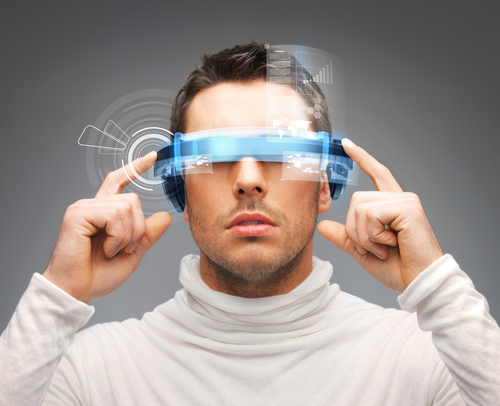Wearable technology is expected to be one of the biggest trends this year, and it was certainly represented well at CES last week. Companies are developing fitness-tracking wristbands, UV-measuring bracelets, heart rate-monitoring sensors and more to enhance different aspects of our lives. Another up and coming technology trend is WebRTC, which enables peer to peer connections over the browser. As I met different vendors and saw different wearable products action last week, I couldn’t help but wonder if the two will ever merge into a technology double duo.
There are basically two different angles when looking at the relationship between wearable technology and WebRTC: The first is incorporating WebRTC a la Plantronics, which enhances its Concept series for gesture-based movement and contextual data. Joe Burton, Plantronics’ CEO, explained that WebRTC opens up a whole new world of communications options, which makes it an ideal environment for wearable capabilities. The second is the growth of the Internet of Things – smart TVs, security systems, toothbrushes and more are starting to join the Internet of Things -- and how the browser will adapt to that in wearable form factors.

Image via Shutterstock
According to IHS, the global wearable technology market is predicted to reach $30 billion in 2018, up from about $10 billion at the end of 2013. Included in this market are health and fitness devices, remote patient monitoring solutions and connected eyewear. At the same time, ABI Research forecasts 4.7 billion mobile WebRTC devices by 2018. As both markets continue to grow, will there ever be a meeting point?
At the Santa Clara WebRTC Conference & Expo we saw demos from companies using WebRTC through Google Glass, and BrowseTel has showcased its technology with Samsung’s Galaxy Gear. Some wearable technology will become an extension of the browser, just like smartphones and tablets have become another channel for Internet connectivity. The question is, when do you need two-way communication on your wearable devices?
For some devices, I think yes, two-way communication would be nice. Smartwatches are being designed as an extension of the smartphone, making it easy to communicate with the same capabilities as a mobile device, just without actually having to have your phone in hand. Users could video call right from their wrists. Same goes for Google Glass; since the screen is already in the users’ line of sight, they could share what they’re seeing while also communicating with other users.
There’s also potential for WebRTC and wearable technology to mix in healthcare environments. Enabling a remote monitoring device with WebRTC so patients and doctors can have face-to-face interactions would be helpful in case of emergencies or something that needs to be seen instead of heard. There have also been experiments to integrate video capabilities in wearable technology to enable a less-restrictive interface between an operating surgeon and mentor.
WebRTC can also play a big role in gaming with virtual reality headsets. Screen sharing can enable multiplayer gaming and communication, making the experience much more lifelike.
Wearable tech is set to disrupt a variety of industries, including health and fitness, sports, fashion and more. But there will only be a few situations where two-way communication would be valuable. What do you think are some other potential opportunities for integrating WebRTC and wearable technology? Let us know in the comments!